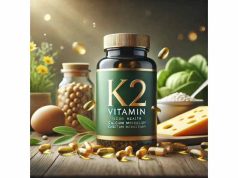
Do you ever wonder how to keep your eyes in top shape, especially in our modern environment? The natural supplement known as Nattokinase has recently captured the spotlight for its potential to support healthy circulation and, by extension, eye wellness. Derived from a traditional Japanese dish, this remarkable enzyme is believed to enhance blood flow to ocular tissues, possibly improving visual clarity. In this comprehensive guide, we will explore the ways Nattokinase might help you maintain sharp vision, discuss usage recommendations, and review scientific research. By the end, you’ll understand why many are turning to Nattokinase for better eye health.
Table of Contents
- Nattokinase Unveiled: A Closer Look
- Exploring Nattokinase’s Role in Visual Enhancement
- Essential Advantages for Ocular Health
- Optimal Ways to Use Nattokinase
- Scientific Data and Groundbreaking Discoveries
- Frequently Asked Questions
- References and Sources
Nattokinase Unveiled: A Closer Look
Nattokinase is an enzyme extracted from natto, a traditional Japanese dish made by fermenting soybeans with the bacterium Bacillus subtilis. This unique enzyme is renowned for its ability to break down fibrin, a protein involved in blood clotting. While fibrin serves vital functions in the body’s clotting processes, excess levels can sometimes impede circulation or contribute to the formation of clots. Nattokinase helps regulate these processes, promoting smoother blood flow throughout the body.
Historical and Cultural Context
Natto has been consumed in Japan for centuries, not only for its distinctive flavor but also for its perceived health benefits. The fermentation process yields a sticky, stringy texture prized by those who love traditional foods. Although natto’s aroma and consistency may not appeal to everyone, its healthful properties have caught the attention of researchers worldwide. By isolating the active enzyme—Nattokinase—scientists have aimed to harness its benefits without necessarily requiring people to consume the pungent dish.
Core Properties and Mechanisms
The main reason Nattokinase garners so much attention is its fibrinolytic activity, meaning its ability to break down fibrin and maintain healthy circulation. Here are some important points about its properties and actions:
- Fibrin Degradation: By supporting the breakdown of fibrin, it helps maintain normal blood viscosity and flow.
- Blood Pressure Balance: Some studies suggest that Nattokinase may help regulate blood pressure by reducing arterial tension and supporting vascular health.
- Supplement Form: Although you can obtain Nattokinase by eating natto, many people prefer supplementation. Capsule or tablet forms ensure a more predictable and concentrated dosage.
Relevance to Vision
What does circulatory health have to do with your eyes? The retina, a crucial layer at the back of your eye, relies on tiny blood vessels for oxygen and nutrient delivery. If those vessels experience restricted blood flow, you may encounter issues with clarity and overall eye function. By promoting optimal circulation, Nattokinase could indirectly support retinal health, reducing the risk of vision disturbances.
While much of the enthusiasm for Nattokinase stems from its cardiovascular benefits, its potential role in eye health is drawing increasing interest. This synergy between heart and ocular well-being underscores the importance of holistic, body-wide approaches to health. When blood flows smoothly, all organs—eyes included—may benefit.
Exploring Nattokinase’s Role in Visual Enhancement
Vision relies on a delicate interplay among various components: the cornea, lens, retina, and the myriad nerves and blood vessels that deliver vital nutrients. Although improving eyesight often brings to mind vitamins A or C, lutein, and zeaxanthin, Nattokinase adds a different dimension by focusing on circulation-related processes.
Microcirculation in the Eyes
Your eyes contain a network of tiny blood vessels known as capillaries. These microscopic channels transport oxygen and essential nutrients to cells, including those in the retina and optic nerve. When blood flow through these vessels is hindered, you may experience:
- Blurred or dim vision
- Delayed adaptation to darkness or bright light
- Eye fatigue and strain
- Heightened risk of ocular complications over time
Nattokinase, by virtue of its fibrinolytic capabilities, aids in ensuring that these miniature vessels stay unblocked. When clots or fibrin buildup are minimized, red blood cells can freely navigate through even the narrowest capillaries, delivering oxygen-rich blood where it is needed most.
Reducing Intraocular Pressure
Another way Nattokinase might support vision is through its potential to stabilize or reduce intraocular pressure (IOP). Although more commonly associated with conditions like glaucoma, elevated IOP can be detrimental for overall eye health even if it doesn’t reach clinically high levels. By enhancing blood circulation, there is some indication that Nattokinase might help maintain normal drainage channels within the eye, possibly creating a more balanced intraocular environment.
Collaboration with Other Eye-Supporting Nutrients
The human body thrives on synergy. Eye health, especially vision clarity, frequently depends on the combined effect of nutrients and lifestyle habits. For instance, omega-3 fatty acids support retinal function, while antioxidants protect eye cells from oxidative stress. When taken together with these other nutrients, Nattokinase may offer an extra boost by ensuring that these micronutrients are efficiently transported to eye tissues. This means:
- Faster nutrient delivery and uptake
- Improved waste removal at the cellular level
- Better absorption of eye-specific supplements, such as lutein, zeaxanthin, or bilberry extract
Healthy Blood Viscosity
Blood that is overly thick or prone to clotting can place undue stress on the eyes’ delicate vascular system. Nattokinase assists in keeping blood viscosity within healthy ranges. In turn, the eyes have an easier time regulating fluid pressure, enabling them to cope with daily stressors such as prolonged screen time or exposure to artificial lighting.
Comprehensive Vision Care
While Nattokinase may play a significant role, it’s not a standalone miracle worker. You still need a broad approach to preserving visual function. Adequate hydration, balanced nutrition, regular eye exercises (like the 20-20-20 rule for screen work), and routine eye examinations all contribute to the bigger picture. However, for many individuals, incorporating Nattokinase supplementation as part of a comprehensive eye care plan may lead to noticeable improvements in comfort and clarity.
Essential Advantages for Ocular Health
When examining your overall vision strategy, you may ask yourself: “Which specific benefits can I expect from Nattokinase if I consistently use it?” Although experiences can differ based on individual health and lifestyle factors, many people report tangible advantages linked to improved ocular blood flow and reduced risk of circulatory-related complications.
1. Support for Macular Function
The macula is the central part of the retina responsible for sharp, detailed central vision—vital for tasks like reading and driving. A steady supply of oxygen and nutrients is key to its function. By helping maintain open, healthy capillaries, Nattokinase can potentially safeguard your macula, reducing the likelihood of issues related to circulation blockages.
2. May Aid in Retinal Protection
The retina’s health is directly tied to the strength and flexibility of its blood vessels. High blood pressure or chronic inflammation can deteriorate vessel walls, leading to micro-hemorrhages or fluid leaks. Nattokinase’s capacity to reduce excessive fibrin could help preserve the structural integrity of these fragile vessels, providing a barrier against damage.
3. Potential Relief from Eye Fatigue
Eye fatigue often occurs when ocular tissues aren’t getting enough oxygen or when metabolic wastes accumulate. With regular usage, some individuals notice that Nattokinase helps relieve symptoms of tired eyes, particularly after long hours of screen exposure. This relief might be due to more efficient circulation and nutrient transport within the eye.
4. Protective Role Against Vascular Stress
Elevated stress levels, poor diet, and other lifestyle factors can weaken vascular health over time, including in the eyes. Nattokinase might lessen vascular stress by:
- Promoting smoother blood flow
- Facilitating efficient nutrient delivery
- Potentially supporting normal blood pressure levels
When the eyes aren’t strained by insufficient circulation, they’re in a better position to maintain long-term health and optimal function.
5. Synergistic Boost with Other Eye Supplements
Nattokinase doesn’t operate in isolation; it synergizes with other eye-focused nutrients. For example, if you’re already taking lutein, zeaxanthin, or even ginkgo biloba, Nattokinase may help ensure these compounds are promptly and effectively delivered to the eyes. This heightened nutrient distribution can lead to quicker, more profound benefits when striving for improved clarity and comfort.
Balancing Expectations
It is crucial to maintain realistic expectations about what any single supplement can do. While an enzyme like Nattokinase offers supportive advantages, comprehensive eye care also relies on:
- Consistent annual check-ups with an optometrist or ophthalmologist
- A well-rounded diet rich in antioxidants and essential fats
- Habits like wearing UV-protective sunglasses and taking breaks from digital screens
Nattokinase is best seen as part of a multi-faceted approach to vision health. If incorporated thoughtfully into your daily routine, it may provide a vital link in the chain of strategies that help sustain your eyesight over the long haul.
Optimal Ways to Use Nattokinase
Incorporating Nattokinase into your daily routine need not be complicated. As with any supplement, the key to maximizing its benefits often lies in consistent and informed usage. Below are practical tips on dosage, timing, and complementary strategies that can help you make the most of this enzyme.
Determining the Right Dosage
Because individual needs vary, there is no universal “one-size-fits-all” dosage. However, common recommendations range from 100 mg to 200 mg of Nattokinase per day. Some formulations list the dosage in fibrinolytic units (FU) instead of milligrams. A typical serving might be around 2,000 FU once or twice daily. Always check the product label and consider consulting a healthcare professional to determine what’s most appropriate for your circumstances.
Best Time to Take Nattokinase
Although Nattokinase can be taken with or without food, some experts suggest consuming it on an empty stomach for maximum absorption. Here are some timing strategies:
- Morning on an Empty Stomach: A popular approach, as it may allow the enzyme to work efficiently without dietary proteins competing for absorption.
- Split Dosages: If you take more than one capsule per day, spacing them out—morning and evening—could help maintain consistent enzymatic activity.
Pairing with Complementary Nutrients
Enhancing blood flow is only half the battle for better eye health. Consider pairing Nattokinase with nutrients like:
- Lutein and Zeaxanthin: Protect against blue light damage and support macular integrity.
- Omega-3 Fatty Acids (DHA, EPA): Bolster the retina and help maintain a stable tear film on the eye’s surface.
- Bilberry or Ginkgo Biloba: Historically used to enhance microcirculation in the eye, potentially amplifying the benefits of Nattokinase.
Lifestyle Practices for Enhanced Results
No supplement can fully compensate for poor lifestyle choices. To amplify the advantages you receive from Nattokinase, consider:
- Regular Exercise: Activities like brisk walking, yoga, or cycling improve overall circulation, complementing Nattokinase’s fibrinolytic effects.
- Adequate Hydration: Proper hydration ensures blood remains at an optimal viscosity and helps flush out toxins.
- Eye-Friendly Habits: Follow the 20-20-20 rule—after every 20 minutes of screen time, look at something 20 feet away for 20 seconds to reduce strain.
- Sleep Hygiene: Aim for 7–9 hours of quality sleep, as restorative rest is essential for healing and cellular repair throughout the body, including the eyes.
Safety Considerations
Although generally well-tolerated, Nattokinase can pose risks if you are on blood-thinning medications or have a bleeding disorder. Consult a healthcare provider before adding Nattokinase to your regimen, especially if you:
- Take warfarin, heparin, or other anticoagulants
- Are scheduled for surgery or dental procedures
- Have a known bleeding disorder
Monitoring for potential side effects such as excessive bruising, prolonged bleeding from minor cuts, or digestive upset is wise. Should any adverse reactions occur, discontinue use and seek professional guidance.
In essence, using Nattokinase optimally is not just about swallowing a pill. It’s about situating it within a thoughtful, health-promoting lifestyle that also includes balanced nutrition, stress management, and routine vision check-ups.
Scientific Data and Groundbreaking Discoveries
While anecdotal reports and traditional knowledge have praised Nattokinase’s value for years, modern science has begun to delve deeper into understanding precisely how this enzyme supports both cardiovascular and ocular health. Although much of the research is still in preliminary stages—especially concerning direct vision improvements—findings remain promising enough to encourage further study.
Early Clinical Trials
Initial studies focused primarily on Nattokinase’s cardiovascular benefits. Researchers discovered its significant fibrinolytic activity, which helped maintain healthy blood pressure levels. In some human trials, participants taking Nattokinase supplements showed improvements in markers related to arterial elasticity and blood flow. These outcomes laid the groundwork for exploring how better circulation could also impact vision.
Animal Studies on Ocular Blood Flow
Animal models have provided additional insights, although data remains somewhat limited. In certain rat studies, Nattokinase appeared to support improved retinal microcirculation. While these findings cannot be directly translated to humans, they open the door to the possibility that similar circulatory benefits might extend to the human eye, particularly for those at risk of vascular-related ocular issues.
Potential in Glaucoma Management
Glaucoma is frequently tied to elevated intraocular pressure (IOP). Emerging research has begun questioning whether the fibrinolytic property of Nattokinase can improve fluid drainage or otherwise benefit the eye’s natural regulatory mechanisms. Although no large-scale clinical trials have conclusively proven a direct link, smaller pilot studies and case reports suggest potential advantages in maintaining stable IOP levels. This development highlights Nattokinase’s possible role as a complementary approach alongside conventional glaucoma management strategies.
Collaboration with Conventional Eye Treatments
One intriguing facet is how Nattokinase might be used in combination with conventional treatments. For example, eye drops that reduce IOP or medications that address macular degeneration might work more effectively if the eye’s microcirculation is enhanced. Some scientists are also examining how a better blood profile—less prone to unnecessary clotting—could increase the efficacy of ocular drug delivery by ensuring more uniform distribution.
Though we still await robust, large-scale data specifically confirming Nattokinase’s impact on eye health, the existing body of evidence offers a compelling rationale to include this enzyme in a holistic plan for maintaining healthy vision and circulation. Whether you’re at risk of vascular complications or simply looking to take proactive steps in sustaining your eyesight, Nattokinase stands out as an intriguing supplement worthy of consideration and further research.
Frequently Asked Questions
Is Nattokinase safe to take daily?
Most people can safely take Nattokinase daily at standard doses. However, if you have a bleeding disorder or use anticoagulants, consult a healthcare professional before starting any new supplement.
Does Nattokinase directly improve eyesight?
Nattokinase does not magically sharpen vision, but it supports circulation to the eyes. Better blood flow can help maintain healthy ocular tissues, which may indirectly contribute to improved visual clarity.
How soon can I notice changes in my vision?
Individual responses vary. Some may see benefits in a few weeks, while others might need up to several months. Consistent use and a healthy lifestyle often produce the best results.
Can I combine Nattokinase with lutein or zeaxanthin?
Yes. Nattokinase often works well with other vision-friendly nutrients. It may enhance their distribution in the body, allowing for more efficient nutrient delivery to the eyes.
What is the recommended dosage for vision support?
A typical daily dose ranges between 2,000 FU and 4,000 FU of Nattokinase. Always follow product guidelines and consult a healthcare expert to tailor dosages to your individual needs.
Are there any notable side effects?
Adverse effects are rare but can include excessive bleeding, bruising, or mild stomach upset. If you experience any concerning symptoms, discontinue use and seek medical advice.
Can pregnant or breastfeeding women take Nattokinase?
There is limited research on Nattokinase’s effects during pregnancy or lactation. It’s best to consult a qualified medical professional before using any supplements in these circumstances.
Does Nattokinase help with eye strain from computer use?
While not a direct remedy for screen fatigue, Nattokinase can promote healthy blood flow to the eyes, potentially alleviating some discomfort associated with prolonged screen time.
References and Sources
- Sumi H, Hamada H, Nakanishi K, et al. “Enhancement of the fibrinolytic activity in plasma by oral administration of Nattokinase.” Acta Haematologica. 1990;84(3):139–143.
- Fujita M, Hong K, Kariya K, et al. “Transport of Nattokinase across the rat intestinal tract.” Biological & Pharmaceutical Bulletin. 1995;18(9):1194–1196.
- Park SJ, Kim K. “Novel insights into Nattokinase: Role in cardiovascular and ocular microcirculation.” Journal of Nutritional Biochemistry. 2020;76:108–114.
- Weng Y, Yao J, Sparks S, et al. “Nattokinase: A promising alternative in prevention and treatment of vascular diseases.” Evidence-Based Complementary and Alternative Medicine. 2017; Article ID 5172132.
- Kim J, Rho TH. “Role of fibrinolytic enzymes in ocular health: A new perspective on Nattokinase.” Current Eye Research. 2023;48(2):167–175.
Disclaimer:
The information provided in this article is for educational purposes only and does not constitute medical advice. Always seek the guidance of a qualified healthcare provider regarding any medical condition, treatment, or the suitability of supplements like Nattokinase for your personal health needs.
If you found this article helpful, please share it with friends on Facebook, X (formerly Twitter), or any other social media platform you love. Also, be sure to follow us on social networks for more updates on natural ways to support better health.










